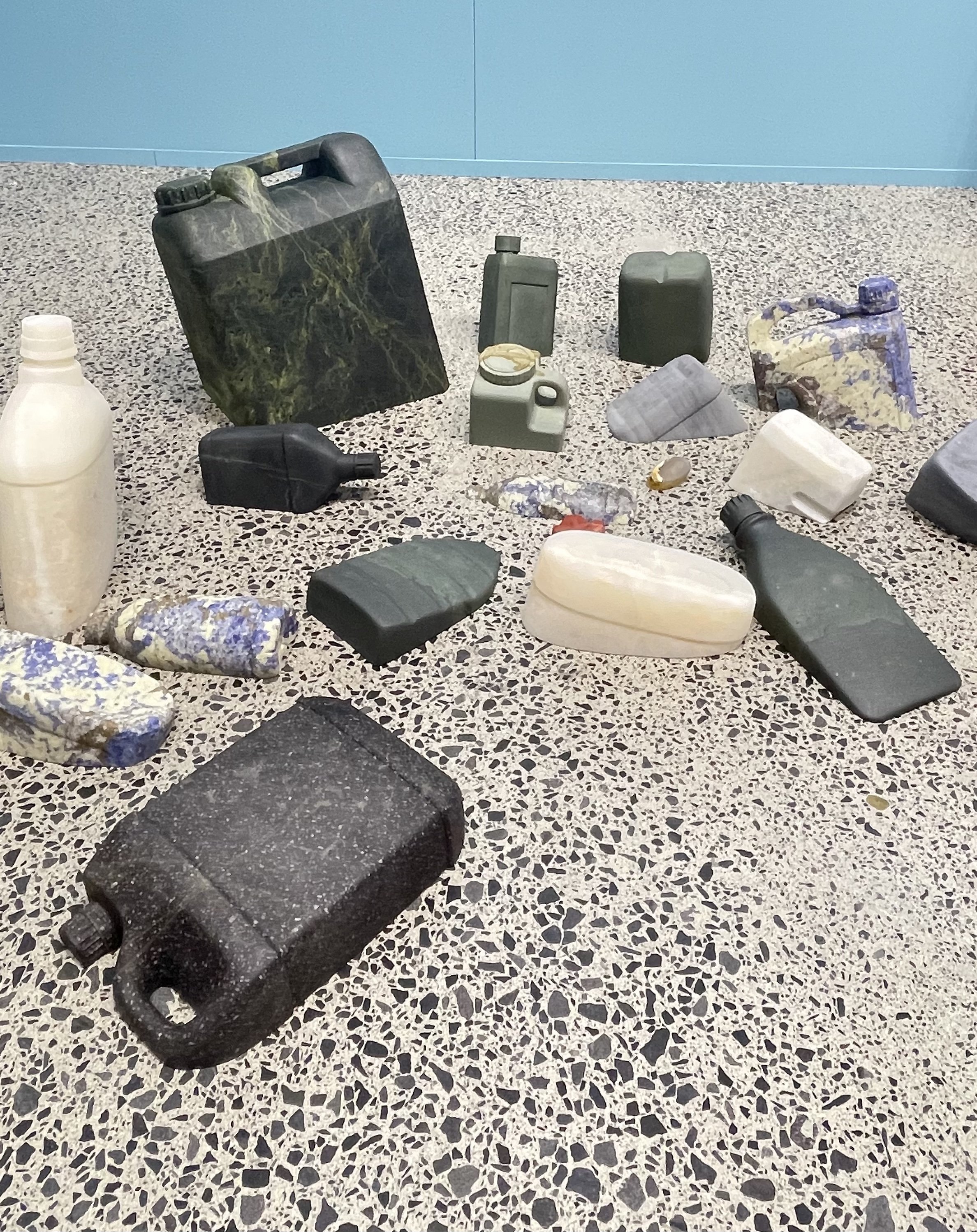Aotearoa Art Fair 2024
Aotearoa Art Fair 2024
This week, one of the biggest annual events in the New Zealand art scene took place – Aotearoa Art Fair returned to Tāmaki Makaurau. This was the first iteration of the fair under new ownership and management, and the general opinion of gallerists, artists, and fair goers was strongly favourable.
This time around, the fair was held at a new venue – the Viaduct Events Centre. Inoperable Wynyard crossing bridge notwithstanding, the events centre was a welcome upgrade from the prior venue at The Cloud, which had become an increasingly tired, draughty and embarrassingly shoddy home for this showpiece event for the visual arts in Aotearoa. The Viaduct Events Centre, on the other hand, had the feel of an appropriately professional setting. Aotearoa Art Fair is a trade event marketed to international audiences and galleries as well as those here in NZ. Within this new setting, the fair is more appealing to visitors and locals alike.
The defunct Wynyard crossing bridge caused many a tedious detour
Auckland’s weather left much to be desired, particularly over the weekend as frequent downpours drenched the city. Nevertheless, the fair organisers turned up with the goods. They ran a sophisticated marketing campaign and presented an engaging programme of events that spoke to a broad swathe of the art-interested public. Visitors turned out in droves throughout the four day event. The opening night was absolutely packed, and aside from a brief lull on Friday afternoon, there was a consistently humming crowd in the building at all times. Participating galleries seemed satisfied with the efforts of the organisers in generating an audience for their offerings, and audiences were largely satisfied with what they saw, feeling that the price of entry was worthwhile.
That is not to say that the fair can or even should please everyone. Art fairs will always lay bare the potentially uncomfortable friction between art and commerce. While it may be a bugbear to some, commercialism is an ever-present spectre in the visual arts sector, and it becomes unavoidable in this context. At its foundation, an art fair is a trade show, geared toward sales, and some will always see this as anathema to their motivations for making art. While there is an argument to be made that the distinction between culture and commerce is on some level a false binary, that’s beyond the scope of this article. Nevertheless, the expense involved in participating in such an event makes sales imperative, and this necessarily shapes the decisions that artists and their dealers make.
Gretchen Albrecht’s Beneath the Sun’s Golden Breath on show at the Two Rooms Gallery booth.
Regardless of the commercial imperative, sensationally good art can be found at art fairs. There were several moments of quiet brilliance within the fair, along with some very loud ones: Gretchen Albrecht’s abstract paintings at Two Rooms Gallery were simply masterful. Joe Sheehan’s sculptural objects shown by Tim Melville were characteristically understated, yet technically and conceptually dazzling. Anoushka Akel’s paintings at Michael Lett’s booth were subtle and enchanting.
Joe Sheehan’s sculptures at Tim Melville
Perhaps the two most nuanced booths were located at either end of the ground floor. Near to the entrance, Starkwhite showed a startling array of modern and contemporary works. The ultra instagram-friendly sheen of Jonny Niesche was positioned beside the monochromatic precision of Gordon Walters, with the vividly gestural work of Sally Gabori around the corner.
At the far end of the building, Gow Langsford presented an equally extraordinary line-up. A studied response by three gallery artists, Virginia Leonard, Sara Hughes and Grace Wright to a remarkable oil painting by Frances Hodgkins and a new exploration of polished stainless steel by Gregor Kregar flanked a monumental portrait by American neo-expressionist Julian Schnabel.
Gregor Kregar’s Infinite Loop shown by Gow Langsford Gallery
There were many other considered booths at the fair, and the standard was consistently strong. On the basis of informal discussions between Artlink and a number of gallerists, sales were satisfactory if unspectacular. Within a broad context of economic doom and gloom, this was a better than expected outcome for many. A clear picture did emerge that the fair did what it said on the box – it created an event, even managing moments of spectacle, and drew a crowd of viewers and prospective buyers.
On the whole, Aotearoa Art Fair 2024 felt less makeshift and provisional, and more like a culturally significant event that can attract galleries and visitors from throughout Asia/Pacific to see some of the best art that New Zealand has to offer. While there is plenty of room for it to continue to grow and develop, the future looks bright.





